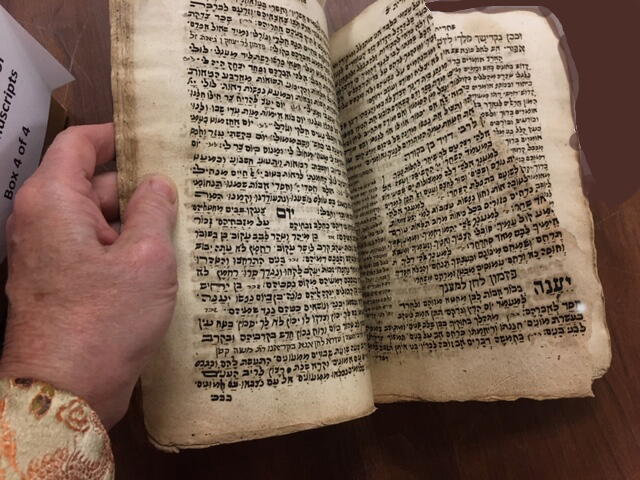
Sinclair New Jersey Collection
The Sinclair New Jersey Collection of printed materials (64,000 volumes) is the largest, most comprehensive library documenting New Jersey history and culture and one of the finest collections of state and local history in the country.
Manuscript Collection
Containing original letters, diaries, sermons, literary manuscripts, organizational records, financial and legal records, and other documents, the Manuscript Collection (over 2,200 distinct collections containing more than 8,000,000 items) is especially strong and widely known for its documentation of all aspects of New Jersey history and society and New Jerseyans' response to national and international issues, 18th century to the present. Other strengths include 19th century Westerners in Japan, 19th and early 20th century British writers, the consumer movement in the United States, 20th century Latin American politics, society and Inter-American cooperation, 20th century labor unions in the United States, American business and technology, American social welfare and social policy, and women's history.
Rare Book Collection

The Rare Book Collection (52,000 volumes) supports research in British and American history and political thought, history of science and technology, travel accounts and interpretations of Japan, lexicography, American wood engravings, and early American and European printing history. Noteworthy are contemporary editions of Milton, Richard Baxter, Defoe, Cobbett, Dickens, Swinburne, De la Mare, Joyce, Philip Freneau, Melville, Whitman, Twain, and Sinclair Lewis. Also included are American atlases, laws, sermons and orations, almanacs, medical botanies, incunabula, private press works, artists' books, and related holdings.
Rutgers University Archives
The University Archives (9,000 cubic feet) serves as the final repository for the historical records of Rutgers University. Its primary purpose is to document the history of the University and to provide source material for administrative use and for researchers who seek to evaluate the University's impact on the history of American social, cultural, and intellectual development. Included are records of administrative and academic units, student organizations, theses and dissertations, photographs, memorabilia, and personal papers of faculty, students, and alumni.
Additional materials
In addition to the four major divisions, there are significant holdings of genealogical resources, newspapers, maps, broadsides, prints, and photographs documenting many aspects of American history.
Although selected materials (including large manuscript collections and many university records) are stored off-site, all collections are available for use only in the Special Collections and University Archives reading room, located in Alexander Library.